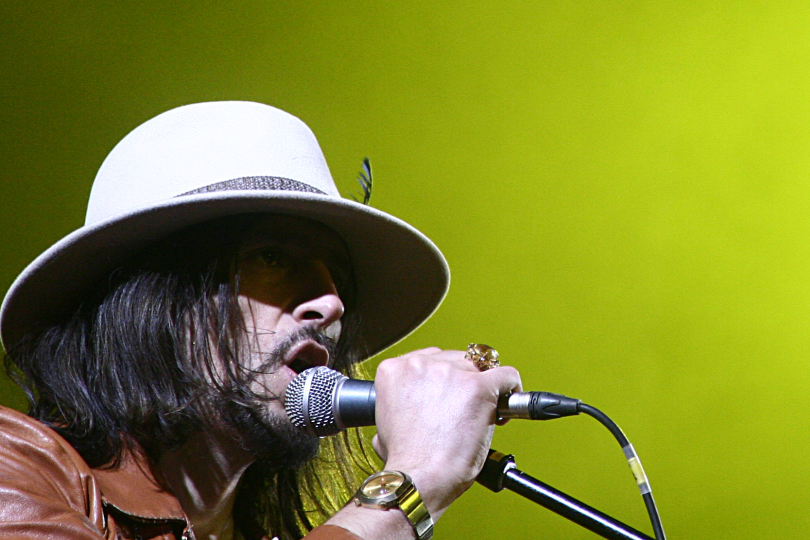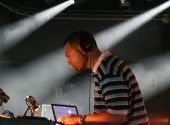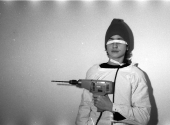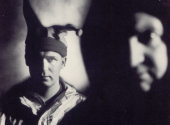
Milestones in Music History #36: The Future Sound of London, Let Go of Boundaries
Are your ears still ringing from the sonic screeching of the Los Angeles punk band the Germs? In this next episode, our journey requires a different kind of vibe. But we are still talking about crossing borders, crossing the line between the permissible and the supreme. We are still talking about pushing musical boundaries, a risk not many in the history of music composition - whatever the genre - have taken. And if we look at electronic music, the group that took the trouble to disrupt the genre and to open new horizons was The Future Sound of London.
Their passion for studying electronics led Garry Cobain and Brian Dougans to meet for the first time. At the time they met, in the mid-1980s, they were studying Music Recording Technology at Salford College of Technology in Manchester. Garry was born in Bedford but left to pursue his studies in Manchester, where alternative music was taking off and the city was the hub of the dance music scene.
It was there that they came to be known as Madchester. The term was coined by Tony Wilson, owner and founder of the independent record label Factory Records, which in addition to being a record company was a creative hotbed. A Factory club, established in 1978, had also been set up and was the venue for several hugely successful local bands, including Cabaret Voltaire, The Durutti Column and Joy Division, who all belonged to the label.
Madchester was a new dance music scene closely linked to the indie dance scene. Indie music had developed within rock psychedelic music. However, indie came to be part of the dance scene in the middle and towards the end of the 80s, which led to an interesting outcome. The birth of the Madchester scene was also aided by the 1987 explosion of MDMA, which began to swarm the city's dance clubs and completely changed the way the musical experience was understood and deeply influenced the perception of music itself.
So, this was the scenario in which Garry and Dougans took their first steps. Dougans, before meeting Garry had already had some experience in music composition and had worked between Glasgow and Manchester, and he had decided to open his own music studio once he finished his studies. Garry joined him shortly afterwards. The duo started working in local clubs, and at the same time produced and issued several singles, released under different artistic names.
After using a few aliases, such as Art Science Technology or Mental Cube, Brian began producing under the nickname Humanoid. It was at this time that Garry joined the music project. Under Humanoid, the single "Stakker Humanoid" was released, which took its title from the sample used in the song, which was taken from the arcade video game Berzerk.
It was a hit that, apart from being played in London's famous dance and house clubs, as Shoom was at the time, had been sampled by such influential musical authorities as UK DJ and radio presenter Bruno Bookes and producer Pete Waterman. The track was fitting, as in the late 1980s the acid house phenomenon was rampant and the track represented its purest essence.
"Stakker Humanoid" eventually found its way onto Brian Dougans' debut album, on which Garry also collaborated, with the futuristic title Global, released in 1989. This is an American-style vocal house (something very different from what would happen with FSOL), in which Ben Ofoedu, who was famous for his collaboration with the electronic dance music duo Phats & Small, also participated.
A very experimental album that mixed early forms of acid house with electronic and industrial music. It may sound a bit crude, but it was the start of something. It is impossible not to hear it. During the same period, the duo continued to release under Mental Cube – the most successful single was the track "Q", released at the end of 1990 – and under the name Metropolis the duo released their eponymous single in 1992.
And it was in that same year that the real breakthrough occurred, with the release of their first studio album, Accelerator, preceded by the release of the single "Papua New Guinea" the previous year. A complex and somewhat avant-garde album, as the canons of techno music, were established for the years to come, with a look at dub and industrial music, for example in the case of the track "Sunshine & Brick", with Garry on vocals.
The themes proposed in Accelerator were taken up by the duo and reworked for the production of their second studio work, Tales of Ephidrina, however, released under the alias Amorphous Androgynous. This work focused more on ambient and dreamlike sound, in the context of induced mental impairment (Ephidrina is a type of amphetamine).
The techno motifs of the previous album returned but were dressed in a different light and there seemed to be much more attention on experimentation. In 1993 they released their second album as FSOL, titled Lifeforms, and it appears to follow in this same vein. However, in addition to the ambient, psychedelic and techno sounds, here we find tropical and exotic motifs. It was a more complex album than Tales of Ephidrina.
Also, the production was more substantial, with the participation of Robert Fripp, singer Toni Halliday and tabla player and prominent Asian Underground exponent Talvin Singh. The release of the album was anticipated by an unusual single – "Cascade", lasting almost 40 minutes – which reached important positions in the British charts and featured the Cocteau Twins singer Elizabeth Fraser on vocals.
The duo had written history. The first two albums and the single "Cascade" ensured FSOL's ever-increasing fame. With the arrival of the new millennium, Cobain and Dougans also began to cultivate interests in the fields of animation, 2D and 3D graphics and the development of new sound systems.
An example of such sound experimentation was the piece "A Gigantic Globular Burst Of Anti-Static", specially conceived for a mixed media exhibition at the Kinetica art museum and designed to be played with 5.1 Surround Sound.
The band has been very prolific in recent decades, releasing as a duo and independently, under different names and projects. An interesting project in recent years is the six-and-a-half-part Environments series, which began in 2007 and ended in 2016, containing both old material from the archive, revised and edited, as well as new material.
They now have their independent record label, Electric Brain Violence. The last two studio albums, Rituals E7.001 and A Space of Partial Illumination E7.002 were published in 2022. The Future Sound of London contributed enormously to the birth of the acid-house movement and the growth of techno music while perfecting ambient and underground music.
Their audacity, and the fact that they were never relegated to just one genre, helped them break through the barriers that distinguished the sub-genres of electronica, generating a new wave of electronic and experimental music. Their desire to dare and take risks is the same as we will find in the Australian group Tactics, protagonists of our next episode of Milestones.
Was acid house a phenomenon linked to a specific historical moment, or does it also exist today? What is the evolution of rave culture in the digital age? Would it be possible to think of the musical world without the distinction between genres and sub-genres? And what is the "future sound" of our music?
Leave your opinion in the comments below!
If you have found an error or typo in the article, please let us know by e-mail info@insounder.org.





